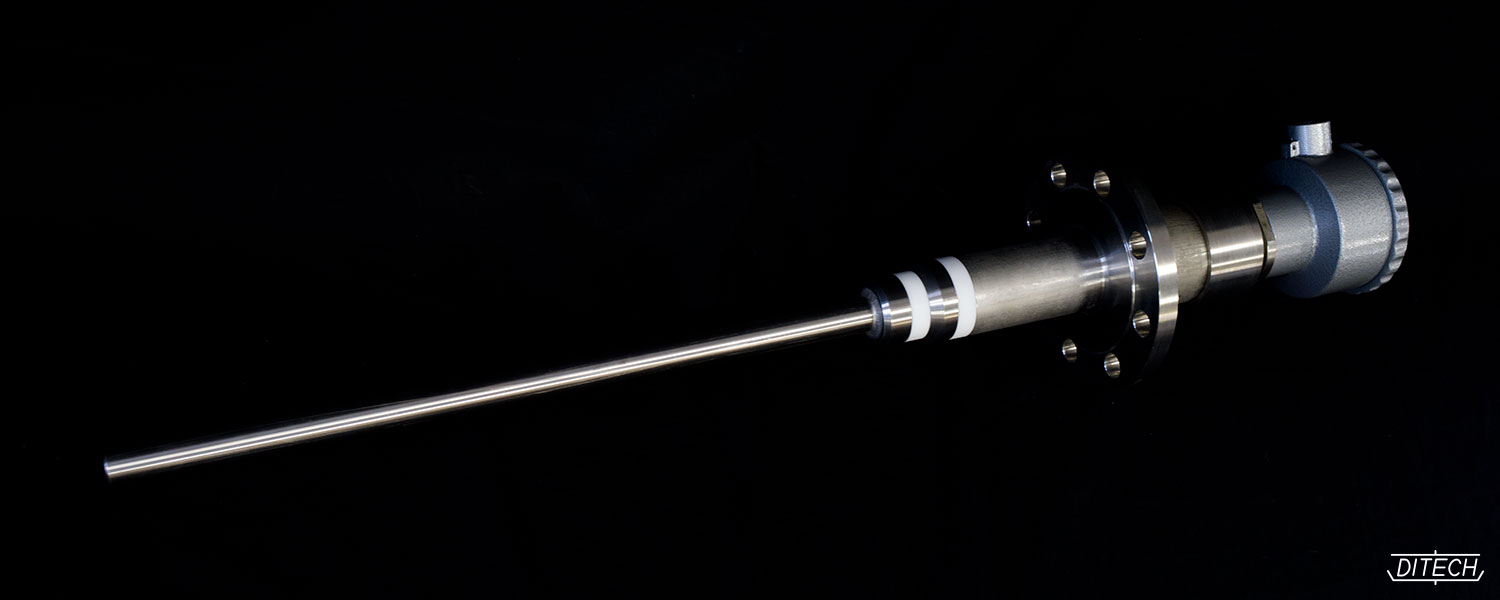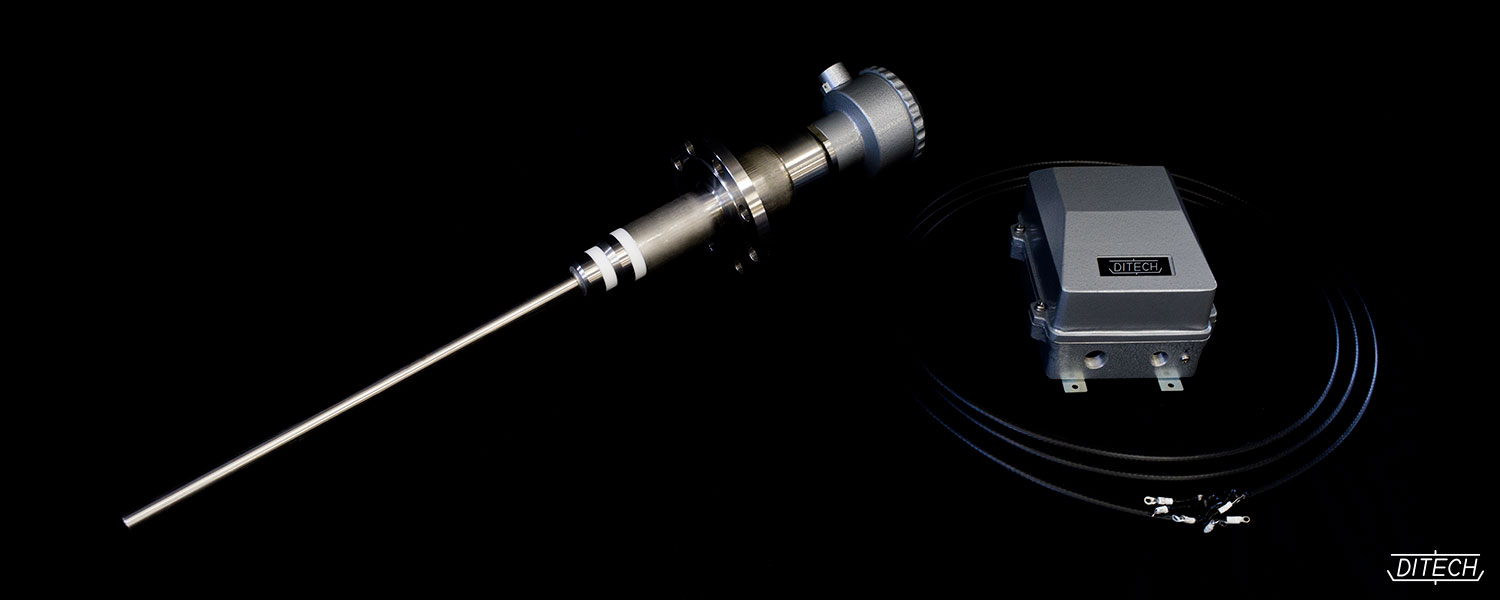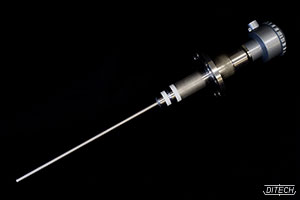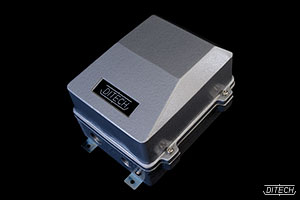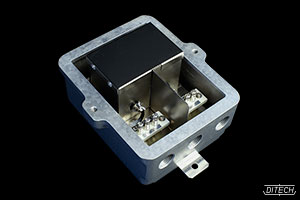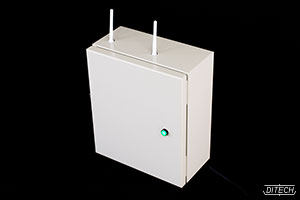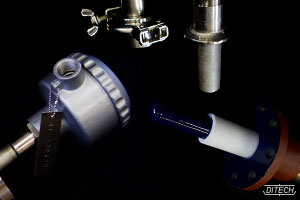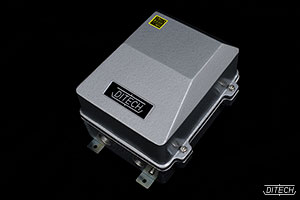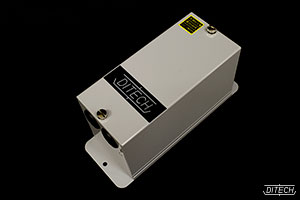Manufacturer of Level Switch, Level Transmitter,
Detector and Sensor DITECH,LTD.
Guard type Level switch
NQS-G
NSS-G
proof
construction
Non-explosion-proof
Intrinsically safe construction(i3nG5)
This models are designed not to be affected by the adhering substance.
Measured powders adhere to the probe surfaces due to static electricity and/or the powder’s adhesiveness. The adhering powder comes off when its weight exceeds its adhesive force.
The adhesion and separation cycle is repeated. The density and relative permittivity of the adhering substance are usually higher than those of the object to be measured.
Canceling out the relative permittivity of the air (which is 1), the ratio of the increased electrostatic capacitance of the adhering substance to that of the object to be measured is 1:3. This means that the adhering substance is highly liable to cause malfunctions since it exerts a triple influence.
The guard type level switch was developed by combining DITECH’s two proprietary techniques, Impedance & guard measurement systems - Capacitance & guard measurement systems, which means it will not be affected by the adhering substance.
principles
Both Impedance & guard measurement systems (a system of detecting the sum of capacitance and conductivity) and Capacitance & guard measurement systems (a system of correcting the sensitivity in detection of capacitance and impedance between electrode and tank) prevent the erroneous signal transmission from the adhering to and accumulating on the surface of electrode by means of a third protection (guard) provided between the main detecting electrode and the grounding electrode.
Signals output by common probes are proportional to the thickness of the adhering substance and its relative permittivity. In contrast, the guard type probe keeps itself from outputting a signal until the thickness of the adhering substance reaches a preset value. This feature does not affect relative permittivity. The permissible thickness of the adhering substance can be varied according to probe dimension.
Guard type level transmitters are also available.
Even if the distance between the detector unit and transducer is extended, an extremely high stability of detection is practically obtainable by the adoption of high-grade circuit configuration and a special cable. In addition, the detector unit is composed of only metal and insulating material without using any electrical parts, so that the Model NQS-G,NSS-G level switch is usable in an extremely wide range of temperature and pressure. This level switch can also be used under radiation.
| Measurement system | Impedance bridge system + guard system |
| Stable detection range | Min. ≦ 0.5pF Mam. ≧ 1000pF Peculiar resistor ∞~0.5Ω |
| Output contact | Model NQS-G: a,c,b 250V 5A (Non-inductive load) / Open collector / Thyristor / SSR Model NSS-G (Model PS-7): a,c,b 200V 1A 100VA (Non-inductive load) |
| Input power | Model NQS-G: AC105V/210V 50/60Hz or DC24V Model NSS-G (Model PS-7): AC105V/210V 50/60Hz |
| Power consumption | Model NQS-G: 7W Model NSS-G: 4W |
| Allowable temperature | Detector: -200℃~+1100℃ (Depends on the specifications) Transducer: Model PS-1G: -10℃~+50℃ Transducer: Model TR-1G: -25℃~+70℃ Power source: Model PS-7: -10℃~+50℃ Special cable: Model DSC-15 (high accuracy use): -10℃~+60℃ Special cable: Model DSC-05 (small size): -10℃~+60℃ Special cable: Model DSC-13 (heat resistance use): -50℃~+200℃ |
| Allowable load | Detector: 2000㎏ Concentrated at detection tip (Depends on the specifications) |
| Allowable pressure | Detector: 100MPa (approx. 1020kg/cm2G) (Depends on the specifications) |
| Weight | Transducer: Model PS-1G: 4.3kg Transducer: Model TR-1G: 4.3kg Power source: Model PS-7: 2.0kg |
| Size | Transducer: Model PS-1G: 200(W)×149(D)×220(H) Transducer: Model TR-1G: 200(W)×149(D)×220(H) Power source: Model PS-7: 80(W)×101(D)×210(H) (mm) |
| Installation | Detector: Flange mounting Screws mounting Ferrule IDF, etc. |
| Material | Detector: SUS304 SUS316 SUS316L Hastelloy Titanium Tantalum Nickel SiC Graphite PTFE Ceramic, etc. Head case: Light alloy SUS304 Salt resistant paint case, etc. |
Model NQS-G
(Non-explosion-proof type)
<Separated transducer type>
This model is composed of detector unit, transducer and special cable.
Model NSS-G
(Intrinsically safe construction / i3nG5)
<Totally separated transducer type>
This model is composed of detector unit, transducer, relay power source and special cable that is 3 core control cable. As the transducer is designed to be installed in a dangerous area, the special cable can be made short enough to minimize picked-up noises, thus permitting a stable performance to be obtainable. As to performance, this model has the same characteristics as those of Model NQS-G.
 DITECH,LTD.
DITECH,LTD.